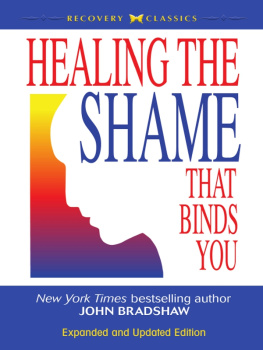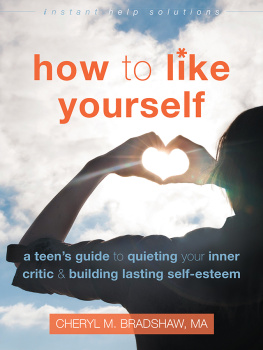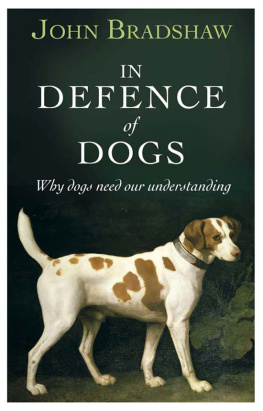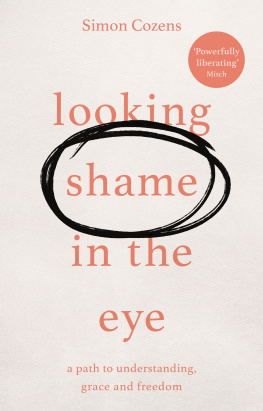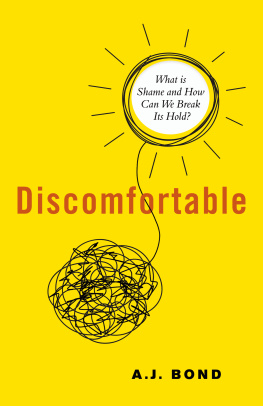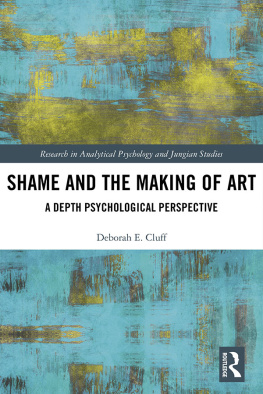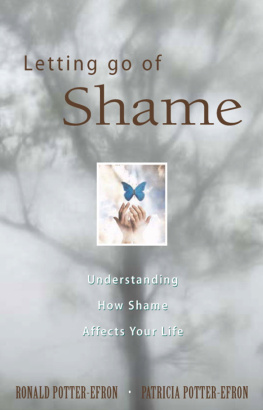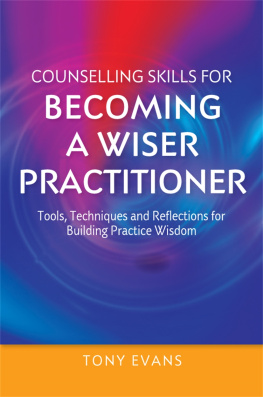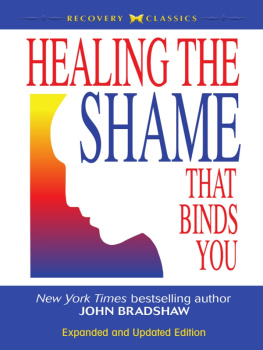HEALING THE SHAME
THAT BINDS YOU
HEALING THE SHAME
THAT BINDS YOU
New York Times bestselling author
JOHN BRADSHAW
Expanded and Updated Edition

Health Communications, Inc.
Deerfield Beach, Florida
www.hcibooks.com
Library of Congress Cataloging-in-Publication Data
Bradshaw, John, 1933
Healing the shame that binds you / John Bradshaw.Expanded and updated ed.
p. cm.
Includes bibliographical references.
eISBN-13: 978-0-7573-9943-5 eISBN-10: 0-7573-9943-6
1. Shame. 2. Psychotherapy. I. Title.
RC455.4.S53B73 2005
616.89'14dc22
2005052577
1988 John Bradshaw
Revised edition 2005 John Bradshaw
All rights reserved. Printed in the United States of America. No part of this publication may be reproduced, stored in a retrieval system or transmitted in any form or by any means, electronic, mechanical, photocopying, recording or otherwise, without the written permission of the publisher.
HCI, its Logos and Marks are trademarks of Health Communications, Inc.
Publisher: Health Communications, Inc.
3201 S.W. 15th Street
Deerfield Beach, FL 33442-8190
Cover design by Andrea Perrine Brower
Inside book formatting by Dawn Von Strolley Grove
To Karen, my extraordinary wife, whose golden smilecan wither away the darkest shameand who loves me unconditionally.
To my longtime friends (who used to be my children)Brad, Brenda and John. Forgive me for all the timesIve transferred my shame to you.
To my father, Jack. Toxic shame took your lifeand robbed us of our time.
Contents
I want to thank Silvan Tompkins for his groundbreaking work on shame. I want to thank Gershan Kaufman for his book Shame, which has been a major resource in my understanding Tomkinss work and in naming the demon I call toxic shame. My book was deeply enriched by Kaufmans pioneering efforts.
Im also indebted to the anonymous writer of the Hazelden publication entitled Shame for my understanding of healthy shame as that which signals our essential human limitation and of the more-than-human/less-than-human polarity of toxic shame.
Several other people have been important to my understanding of the dynamics of shame. Dr. Donald Nathanson has further helped me understand Tompkinss theory of the affects as the primary motivators of human behaviors. Others who have helped me greatly are Carl D. Schneider, Charles Darwin, Havelock Ellis, Vladimir Soloviev, Max Scheler, Marilyn Mason, Merl Fossem, Sheldon Kopp and my colleague at the Meadows Treatment Center, Pia Mellody.
Kip Flock, my friend and cotraining therapist in Los Angeles, was extremely helpful in my developing the concepts in my first book. Kip and I have spent countless hours discussing and clarifying the concept of shame.
I want to thank my colleagues at the Center for Recovering Families in Houston (especially Mary Bell, may she rest in peace).
I thank my best friends, my brother Richard, George Pletcher and Rev. Mike Falls, for sharing their pain and vulnerability with me. Their non-shaming acceptance has allowed me to share my toxic shame with them. Together weve reduced the power of toxic shame in our lives.
Thanks to my publishers, Peter Vegso and Gary Seidler, for their continued commitment and total support of my work. Im grateful to the entire production staff at Health Communications.
My publicist Diane Glynn and her able associate Jodee Blanco went far beyond the call of duty in promoting the first edition of this book.
My original book would not have been possible without the incredible patience of Barbara Evans, who diligently typed and retyped my manuscript (at all hours of the day and night). Thanks to my associate Barbara Bradshaw, whom many of you have come to love. Thanks to my brilliant wife, Karen, who read and advised me on this new edition and who knows all about computers!
And lest I forget (which I too often do), my greatest gratitude goes to my Higher Power, whose grace has saved me from my toxic shame.
I ts been sixteen years since I wrote the first edition of Healing the ShameThat Binds You. At that time the material on shame was tremendously helpful to me personally, but I had no idea of its impact on the public. The response has been a joy to me, and I want to thank you for your continuing letters of appreciation. The book is now in ten languages and has sold more than 1.5 million copies in the United States and more than one hundred thousand copies abroad. I was most amazed when it hit the New York Times best-seller list. That is an honor my toxic shame had never let me dream could happen.
In the intervening years Ive enriched my understanding of the importance of healthy shame in forming our sense of identity, in guarding our honor and dignity, in safeguarding our spirituality and in forming our conscience. Ill be completing a new book in 2006 on the unique kind of moral intelligence that is the source of virtue and ethical sensitivity. Without healthy shame, moral behavior and ethical responsibility are impossible.
In researching my book on family secrets, I found many writings concerning shame that I had not known about when I first wrote Healing theShame That Binds You.
Thanks to the psychiatrist Donald Nathanson and his fine book Shameand Pride, I learned that the first scholarly treatise on shame, entitled TwoDialogues of Shame, went back to a Renaissance genius named Annibale Pocaterra, who wrote it in 1592.
Pocaterra clearly understood shame was an innate feeling that could be internalized as a destructive identity.
I further came to realize that Charles Darwin, writing three hundred years later, found blushing and the mother of blushing, shame, to be the emotion that distinguishes humans from all other animals. At the turn of the century, Havelock Ellis produced his extensive studies, The Psychology ofSex, the first part of which he called The Evolution of Modesty, an essay on shame and blushing that supports Darwins discussion. In Russia, a great philosopher in the nineteenth century, Vladimir Soloviev, put shame at the heart of his ethics. In The Justification of the Good, he writes, The feeling of shame is a fact which absolutely distinguishes man from all lower nature. Soloviev defines humans as the animals capable of shame.
I wrote my masters dissertation on the work of the German philosopher Nietzsche and quoted his statements on shame as the source and safeguard of spirituality in the first edition. Nietzsche delved deeply into the meaning of shame in his attempt to understand what it means to be human. I will expand on Nietzsches understanding of the relationship between shame and spirituality in the new Part III of this book, where I expanded Chapter Twelve of the original edition into three separate chapters.
Ive come to see that one of the most profound aspects of healthy shame is its role in forming, directing and fulfilling the sex drive and in forming mature and soulful sexuality. Im indebted to Carl D. Schneider, in his book Shame, Exposure and Privacy, for presenting the work of the German philosopher Max Scheler. Scheler wrote his German treatise, entitled berScham nd Schamgelfhl, in the mid-twentieth century. Unfortunately, this work has been translated only into French, under the title La Pudeur. Im completely indebted to Schneider for his presentation of this important material in English. I have put this material in the new Chapter Twelve, entitled Spirituality and Sexuality. In this chapter, I outline how healthy shame forms, directs and fulfills the development of healthy sexuality.
Next page
